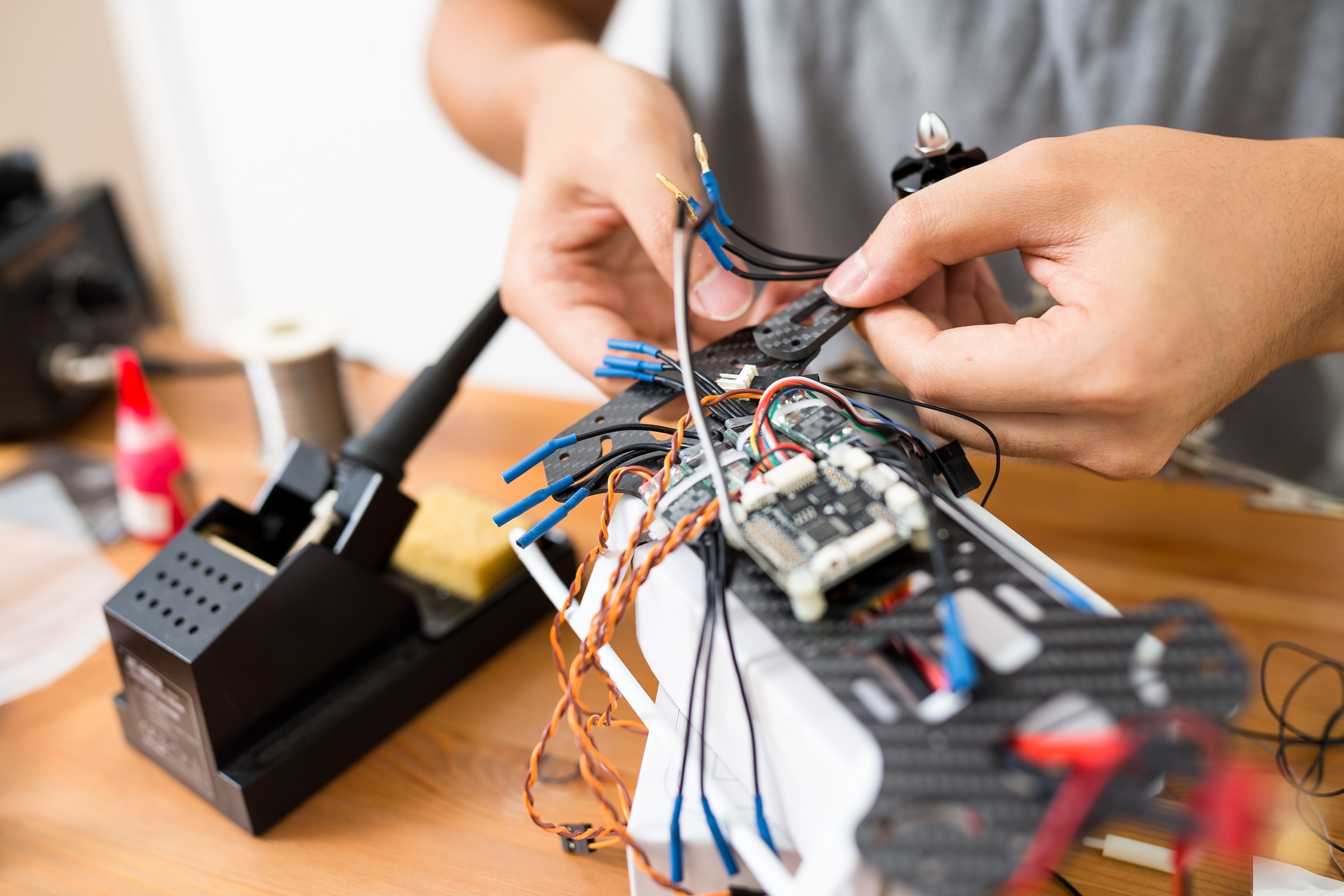In the ever-evolving world of construction, technology continues to play a significant role. Drones, an epitome of this technology revolution, have found wide applications across multiple sectors, including real estate. These high-tech devices provide real-time data and images, significantly enhancing project monitoring while ensuring safety and efficiency. In particularly large-scale real estate projects, drones have become an indispensible tool for surveying and monitoring construction sites.
The Growing Influence of Drones in Construction
The robust growth of the drone industry has seen a shift of its application from recreational uses to more serious roles such as surveying and monitoring in various industries including the construction sector. Drones or Unmanned Aerial Vehicles (UAVs) are increasingly being used in construction to enhance safety, speed up the project time, and improve data accuracy.
En parallèle : How to Assess the Impact of Local School Quality on Residential Real Estate Values?
Drones offer a bird’s eye view of construction sites, providing high-resolution images and data for precise project monitoring. Fixed-wing drones, in particular, are highly effective for aerial inspections of large construction sites due to their longer flight times and faster speeds.
The ability to access difficult areas, capture real-time images, and produce highly accurate data are among the reasons that drones have become a predominant technology in the construction industry.
A voir aussi : What Is the Potential of AI-Powered Chatbots in Enhancing Real Estate Customer Service?
Leveraging Drone Technology for Real-Time Monitoring
Real-time monitoring is a critical aspect of any construction project. The traditional methods of on-site inspections and manual data collection are time-consuming and potentially dangerous. Drones have emerged as a game-changer, offering real-time site monitoring with the help of advanced technology.
By deploying drones at construction sites, you can capture aerial images and videos in real time. These real-time feeds can be analysed to identify potential risks, monitor progress, and ensure compliance with project specifications. Drones equipped with high-resolution cameras can capture minute details, making it possible to spot even the smallest deviations in construction.
Moreover, drones also provide thermal imaging capabilities which can be very valuable in identifying hidden issues such as water leaks or insulation gaps, which could otherwise remain undetected in manual inspections.
Drones and Data Collection
Data plays an essential role in modern construction projects. Detailed, accurate data can help make informed decisions and streamline processes. Drones significantly enhance data collection in construction through their advanced capabilities.
Equipped with GPS and advanced sensors, drones can provide detailed and precise surveying data. This high-quality data can be used for creating 3D models of the construction site, enabling comprehensive site analysis and planning.
Drones also offer the ability to collect data remotely, reducing the need for manual site visits and thereby increasing safety. The data collected by drones is real-time and highly accurate, making it a valuable tool for site managers and construction professionals.
Enhancing Safety with Drones
Safety is a primary concern in any construction project. Traditional methods of inspecting high-risk areas of a construction site often put workers at risk. Drones are revolutionizing this aspect by taking over the task of inspecting hazardous areas.
Drones can easily navigate hard-to-reach or dangerous areas, providing clear images for analysis. This allows for early detection of potential safety hazards such as structural issues or unstable ground, enabling preventative measures to be taken before any accidents occur.
Additionally, drones can monitor the site regularly and identify any changes or deviations that might pose a threat to worker safety. This continuous monitoring capability empowers construction managers to create a safer work environment.
Implementing Drones in Your Construction Project
Implementing drones in your construction project requires careful planning and understanding of the technology.
Firstly, it’s important to choose the right type of drone for your project. Fixed-wing drones are ideal for large-scale projects due to their long flight durations and wide coverage. On the other hand, rotary-wing drones are suitable for smaller projects where precision and maneuverability are more important.
Secondly, you need to consider the necessary equipment and software for your drone. This may include high-resolution cameras for aerial imaging, advanced sensors for data collection, and software for data analysis and real-time monitoring.
Lastly, it’s crucial to abide by the regulations related to drone usage in your region. Ensure that the drones are operated by trained professionals and that they adhere to the regional and national rules and regulations related to drone flights.
In conclusion, drones offer an innovative solution for real-time monitoring and data collection in large-scale construction projects. By leveraging this technology, you can improve project efficiency, enhance safety, and ensure accurate and timely completion of your construction project.
Advantages of Drone Surveying in Commercial Real Estate
Drone surveying is transforming the way commercial real estate projects are executed, and for good reason. Harnessing the power of drone technology in your construction project offers several advantages.
Drone surveying enables construction teams to monitor project progress in real time. This real-time data allows construction companies to compare the project’s current state with the planned schedule and make necessary adjustments to ensure timely completion. Beyond just maintaining schedule compliance, this real-time monitoring allows construction managers to identify performance bottlenecks, manage resources more effectively, and ultimately improve project efficiency.
The high-resolution images captured by drones also enhance the decision-making process. These images provide clear, detailed visuals of the construction site, enabling project managers to make informed decisions based on accurate, real-time data. This reduces the likelihood of costly errors and reworks.
Drone surveying also increases safety on the construction site. Drones can easily navigate hazardous areas, reducing the need for human inspection and thereby minimizing the risk of accidents. Furthermore, drones equipped with thermal imaging can detect potential safety threats such as water leaks or insulation gaps, which are often difficult to identify through manual inspections.
Finally, drone technology offers substantial cost savings for construction projects. Drone surveying eliminates the need for expensive traditional surveying methods and reduces the time required for data collection, thus saving both time and money.
Despite its numerous advantages, the use of drone technology in construction requires careful consideration. From selecting the right type of drone to understanding and adhering to the relevant regulations, implementing drones in your construction project demands thorough planning and knowledge.
Conclusion: Embracing Drones for Large-Scale Real Estate Projects
The construction industry is witnessing a major shift with the incorporation of drone technology. No longer are drones just for recreational use or confined to the military sector. Today, they are pivotal in shaping the way large-scale real estate projects are executed.
From enabling real-time monitoring to enhancing safety, drones are redefining traditional construction methods. They offer a cost-effective, efficient, and safe way of surveying construction sites. The high-resolution data they provide is invaluable for decision making and maintaining project efficiency.
Moreover, with the ability to access hard-to-reach areas and provide detailed survey data, drones are becoming an indispensable tool for construction companies. Whether it’s a fixed-wing drone for large-scale projects or a rotary-wing drone for smaller, precision-required projects, the benefits of incorporating unmanned aerial vehicles into your construction process are undeniable.
However, while the benefits are substantial, it’s paramount that construction firms understand the technology, choose the right equipment, and adhere to all relevant regulations. Only then can they truly reap the benefits of incorporating drone technology into their processes.
In conclusion, drones are not just a fad in the construction industry, they are the future. They offer a powerful solution for real-time monitoring and data collection, increasing efficiency, safety, and accuracy in construction. Construction drone usage is set to rise as more companies recognise the value they bring to commercial real estate projects.















